Search results for: 'Roma'
-
 Roman gold ring with beautiful intaglio
Roman gold ring with beautiful intaglioHervorragend erhaltener Fingerring aus Gold mit hohler Ringschiene. Schönes Intaglio aus Karneol mit dem Treuesymbol dextrarum iunctio. 10mm x 8mm Innenmaße.
Price: on request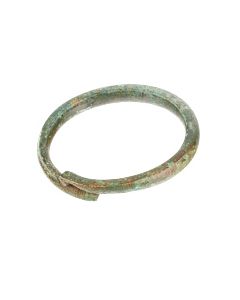 Decorated Roman bronze bracelet
Decorated Roman bronze braceletWundervoller Bronzearmreif mit überlappenden Enden und quadratischem Profil. Die beiden Enden sind kunstvoll geformt und mit Ritzdekor verziert. Grüne bis schwarze Patina.
Price: on request Roman ritual mirror showing Leda and the swan
Roman ritual mirror showing Leda and the swanDarstellung der Leda, die mit entblößter Brust am Boden liegt. Von der Seite nähert sich der Schwan. Über der Szene zweireihige griechische Inschrift.
€610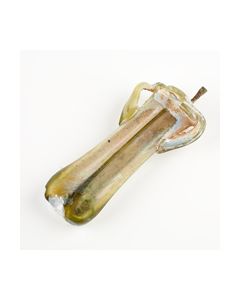 Very rare Roman glass double unguentarium with applicator
Very rare Roman glass double unguentarium with applicatorPerfectly preserved, worth the exhibition in a museum. From an old British collection.
Price: on request Fragment of a Roman brick with maker's mark TA.IN
Fragment of a Roman brick with maker's mark TA.INZiviler Ziegeleibetrieb. Der Fundort ist Trier. Ende 3. bis Beginn 4. Jh. n. Chr. Selten.
Price: on request Roman glass
Roman glassRoman glass from the 1th to 4th century AD. Small flask in fine condition.
Price: on request Stamped Roman tile found in Trier
Stamped Roman tile found in TrierThe tile belongs to the ADIVTE/ADIVTICE group and was produced in the late 3rd or early 4th century AD. Found in Trier, Germany.
Price: on request Fragment of a stamped Roman tile
Fragment of a stamped Roman tileThe stamp AYK is not discussed in the literature at hand and thus may be rare.
Price: on request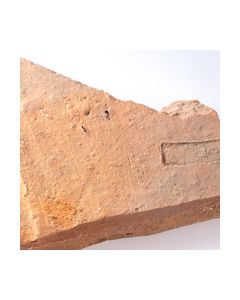 Fragment of a stamped Roman tile
Fragment of a stamped Roman tileProbably manufactured in Treves area, Germany. Roman Empire, 3rd - 4th century A.D.
Price: on request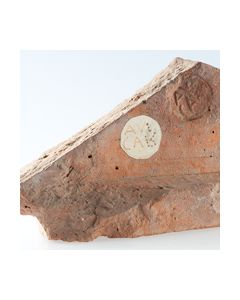 Fragment of a stamped Roman tile
Fragment of a stamped Roman tileThe stamp AV CA is not discussed in the literature at hand and thus may be rare.
Price: on request Roman tile with inverse stamp
Roman tile with inverse stampProbably found in Trier, Germany. Rare inverse stamp, very well preserved and interesting object.
Price: on request Large stamped Roman tile fragment
Large stamped Roman tile fragmentFrom the ARMO group. Probably manufactured in Treves area, Germany. Roman Empire, 3rd - 4th century A.D.
Price: on request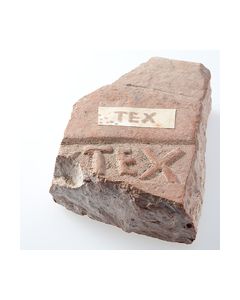 Stamped Roman tile
Stamped Roman tileThe tile belong to the ADIVTE/ADIVTICE group. Very deep and perfecty preserved stamp. Reported to have been found in Trier, Germany.
Price: on request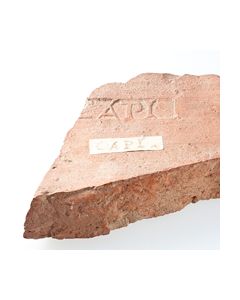 Stamped Roman tile found in Treves
Stamped Roman tile found in TrevesPerfectly preserved with deeply carved stamp. From the CAPIONACI group.
Price: on request Roman oil lamp - found in England
Roman oil lamp - found in EnglandFundregion: England. Faszinierendes Belegstück für das Ausmaß des antiken Handels. Museale Erhaltung.
Price: on request Roman sandal sole type fibula
Roman sandal sole type fibulaDie Form wird in der Literatur als Schuh- oder Sandalensohle bezeichnet. Der sehr dekorative Fibeltyp war extrem beliebt und im zweiten Jahrhundert weit verbreitet. Er stammt aus den nördlichen römischen Provinzen.
Price: on request Roman oil lamp showing cock
Roman oil lamp showing cockVollständig erhalten, mit Spuren eines dunkelroten Überzugs. Sehr schöner Zustand mit gut erkennbarem Motiv. Römische Kaiserzeit.
Price: on request Elegant Roman glass bottle - found in a ship wreck in the Mediterranean
Elegant Roman glass bottle - found in a ship wreck in the MediterraneanElegantes Glas aus römischer Zeit. Geborgen aus einem Schiffswrack im östlichen Mittelmeer und in nahezu perfekter Erhaltung. Die gereinigte Außenseite gibt den Blick auf die antike Glassubstanz frei.
Price: on request Decorated Roman silver ring
Decorated Roman silver ringRömischer Fingerring aus Silber. Auf das Ringband aufgesetzte Ringplatte mit Ritzdekor. 2. bis 3. Jh. n. Chr.
Price: on request Roman bronze statuette of Venus
Roman bronze statuette of VenusLeft arm and pigtail missing, otherwise perfectly preserved. From an Austrian collection, in this since the 1960s.
Price: on request Römische Daroma Öllampe
Römische Daroma Öllampe1. bis 2. Jh. n.Chr. Länge 70mm, Breite 55mm, Höhe ca 25mm. Perfekt erhalten. Einer der interessantesten Typen aus der römischen Zeit.
Price: on request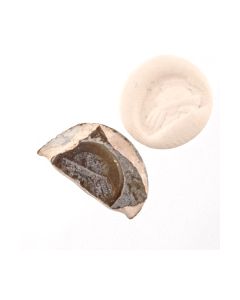 Roman intaglio with portrait head
Roman intaglio with portrait headDark glass paste with portrait head of a young woman. She is wearing a traditional headband. The hair is worn in locks falling in her neck. Dating from Roman Republic to Roman Imperial times. From the Professor Brosch collection of ancient engraved gems.
Price: on request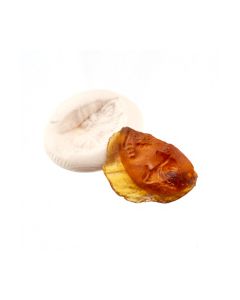 Roman intaglio of good workmanship
Roman intaglio of good workmanshipQuality ring stone from orange-brown glass. Showing a draped bust. Roman period. From the Professor Brosch collection of ancient gems.
Price: on request Roman Intaglio with helmeted bust
Roman Intaglio with helmeted bustWorkmanship of highest artistic quality. Detailed portrait of a young military wearing a Corinthian helmet. Roman Republican to early Roman Imperial. Made from beautiful violet glass imitating amethyst.
Price: on request Roman Intaglio with helmeted bust
Roman Intaglio with helmeted bustNice ancient intaglio made of beautiful greenish yellow glass. The quality work shows the portrait of a young military wearing a Corinthian helmet.
Price: on request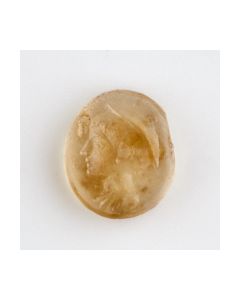 Roman Intaglio with bust of Mercury
Roman Intaglio with bust of MercuryThe glass paste shows Hermes in travel garment. The motive is taken from older Greek gem stones. In Roman culture the god Hermes was known as Mercurius (Mercury).
Price: on request Roman surgical probe made of silver
Roman surgical probe made of silverThe so-called specillum was standard issue for roman doctors. Similar probes are still in use today. Ancient surgical instruments made of silver are extremely rare.
Price: on request Roman surgical probe made of bronze
Roman surgical probe made of bronzeThe so-called specillum was standard issue for roman doctors. Similar probes are still in use today. Very fine craftsmanship of an ancient surgical instrument.
Price: on request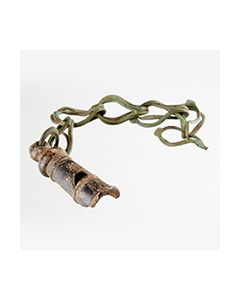 Roman military whistle
Roman military whistleHistorically interesting example of Roman military equipment. Whistles of this type have been used in the 1st to 2nd cent. AD. Their function is not fully understood, yet.
Price: on request Roman Republic - Denarius - P. Accoleius Lariscolus
Roman Republic - Denarius - P. Accoleius LariscolusRome, 43 BC. AV: Bust of Diana Nemorensis, RV: Triple cult statue of Diana Nemorensis facing, supporting on hands and shoulders beam with five cypress trees; the figure on the left holding poppy, the figure on the right holding lily. Attractive dark patina.
Price: on request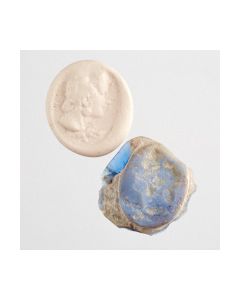 Roman intaglio with a young woman
Roman intaglio with a young womanMiniature work in a colourful glass paste changing from bright blue to an opaque light blue. The intaglio from Roman times exhibits the portrait head of a young woman.
Price: on request Roman specillum
Roman specillumThe so-called specillum is a surgical probe. It was standard issue for roman doctors. Similar probes are still in use today. 1st to 4th cent. AD.
Price: on request Roman military whistle
Roman military whistleHistorically interesting example of Roman military equipment. Whistles of this type have been used in the 1st to 2nd cent. AD. Their function is not fully understood, yet.
Price: on request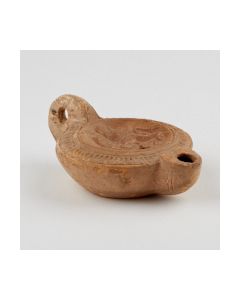 Roman oil lamp with imperial equestrian statue
Roman oil lamp with imperial equestrian statueImpressive, perfectly preserved lamp from old German collection
Price: on request Roman oil lamp with standing goddess
Roman oil lamp with standing goddessGoddess dressed in long robe, holding cornucopia. From old German collection
Price: on request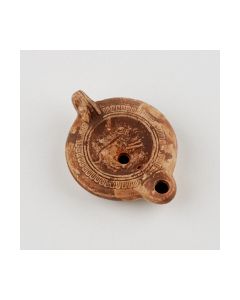 Perfectly preseved imperial roman oil lamp with dog
Perfectly preseved imperial roman oil lamp with dogExtraordinary fine and detailed dog depiction. From old German collection
Price: on request

